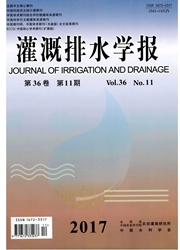

 中文摘要:
中文摘要:
为了探究在气候变化背景下不同时间尺度的干旱变化特征,基于贵州省19个代表气象站1960—2013年气象资料,采用标准降水蒸散指数(SPEI),分析了贵州省年度、4个季节以及秋收作物生长季的时空分布特征和发生规律及其对气候变化的响应。结果表明,年度、春季、夏季和秋季的干旱情况呈加重趋势且具有长期持续性;除冬旱外,年度和其余季节的干旱站次比扩大,以局域性和全域性干旱为主,干旱强度增强,以轻度和中度干旱为主;春季和夏季是贵州省干旱的高发时段,春季最易旱区集中在黔西北地区,夏季最易旱区分布在黔东北和黔东南地区;整个研究时域内秋收作物生长季的干旱化趋势上升,尤其是在2001年以后中干旱情况明显加重;干旱易发区呈由东向西的转移趋势;影响贵州省干旱的主要气象要素是降水、相对湿度和日照时数,其次是温度。
 英文摘要:
英文摘要:
Daily meteorological data, collected from 19 stations within Guizhou province over 1960-2013, were used to calculate the standard precipitation-evaporation index (SPEI) in annual, seasonal and sixmonth time scales. The spatial and temporal distribution characteristics of drought and regional response to climate change in Guizhou province in recent 54 years (from 1960 to 2013) were analyzed under global climate change. Results indicated that. the drought stations proportions and drought intensities at the annual, spring, summer and autumn scales exhibited upward trend over the past 54 years with a better continuity in the future; The drought stations proportions appeared as the features of the local and all regional drought, and the drought intensity showed a moderate level at seasonal and annual scales. Drought occurred in high frequency at stage of spring and summer. Spring drought happened frequently in northwest of Guizhou, in contrast, while summer drought happened frequently in the northeast and southeast parts. During the crop growth stage, the region had a drought trend, especially a serious drought tendency after 2001. Spatially, the high frequency of crop-growing seasons drought region tended to move to the west. Precipitation, relative humidity and the accumulative sunshine were the main factors affecting the meteorological drought in Guizhou province.
 同期刊论文项目
同期刊论文项目
 同项目期刊论文
同项目期刊论文
 期刊信息
期刊信息
